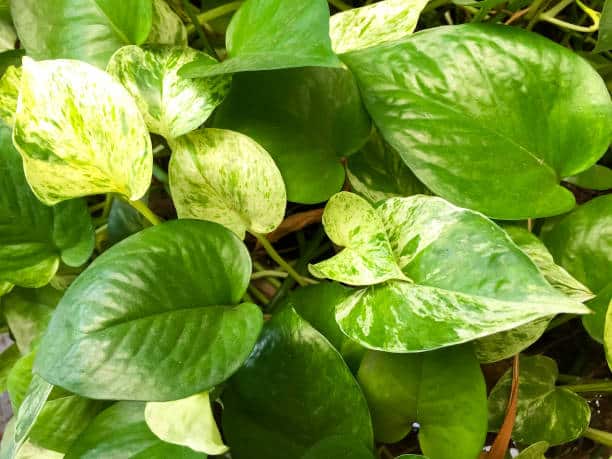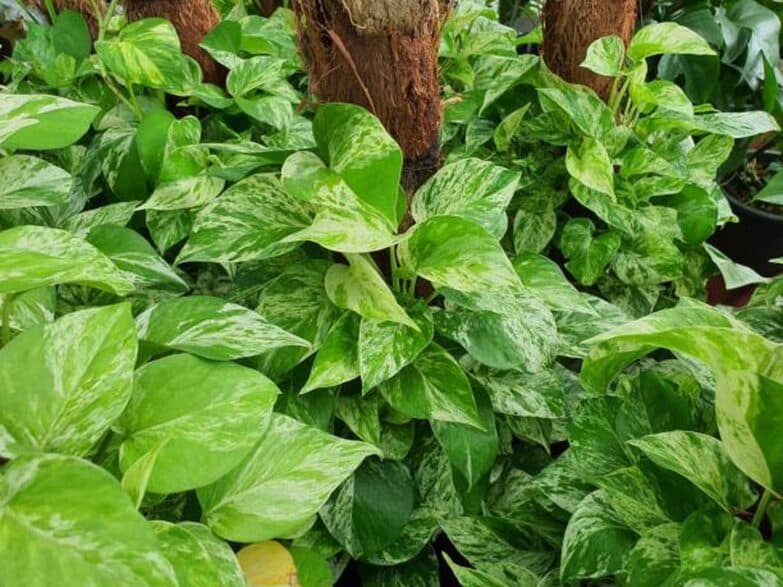The Jessenia Pothos is an increasingly popular indoor plant, known for its stunning foliage and easy-care nature. It’s an excellent choice for anyone looking to add a touch of lush greenery to their indoor space without the need for constant attention. In this comprehensive guide, we will cover everything you need to know about Jessenia Pothos, from its origins and characteristics to proper care techniques and potential issues you might encounter.
Origins and Characteristics of Jessenia Pothos
Origins
Jessenia Pothos (Epipremnum aureum ‘Jessenia’) is a cultivar of the well-known Golden Pothos (Epipremnum aureum). It originates from the tropical forests of Southeast Asia and the Pacific Islands. This beautiful variety has become increasingly popular among houseplant enthusiasts for its attractive foliage and ease of care.
Appearance
The Jessenia Pothos stands out for its vibrant, variegated leaves, which feature a mix of green, golden yellow, and cream hues. Each leaf is heart-shaped, with a glossy texture and a slightly wavy edge. The vines of this plant can grow quite long, making it an excellent choice for hanging baskets or training around a support structure. As the plant matures, the leaves can grow larger, and the variegation may become more pronounced.
Caring for Your Jessenia Pothos
Light Requirements
Jessenia Pothos thrives in bright, indirect light. It can tolerate lower light conditions, but its growth may slow down, and the variegation on the leaves might become less pronounced. However, direct sunlight should be avoided, as it can scorch the leaves and damage the plant. Placing your Jessenia Pothos near an east or west-facing window with filtered light is ideal.
Watering
One of the reasons Jessenia Pothos is considered an easy-care plant is its ability to tolerate inconsistent watering. It’s essential to let the top inch of soil dry out between waterings, as overwatering can lead to root rot. Depending on the humidity and temperature in your home, this may mean watering your Jessenia Pothos every 7 to 10 days. Be sure to use a well-draining potting mix and a container with drainage holes to prevent water from sitting in the bottom of the pot.
Temperature and Humidity
Jessenia Pothos prefers a warm, humid environment, much like its natural tropical habitat. It thrives in temperatures between 65 and 85°F (18 and 29°C). Keep the plant away from cold drafts, such as those from air conditioning vents or open windows during cooler months. To maintain the humidity levels around your Jessenia Pothos, you can place it on a tray filled with pebbles and water, or use a humidifier in the room. Misting the leaves can also help increase humidity, but be cautious not to overdo it, as this can lead to leaf rot.
Fertilization
Feed your Jessenia Pothos with a balanced, water-soluble houseplant fertilizer every 4 to 6 weeks during the growing season (spring and summer). Dilute the fertilizer to half the recommended strength to avoid burning the roots. It’s best to reduce or stop fertilizing during the winter months when the plant’s growth slows down.
Pruning and Propagation

Pruning
Regular pruning of your Jessenia Pothos will encourage bushier growth and prevent the plant from becoming too leggy. To prune, use clean, sharp scissors to cut just above a leaf node (where a leaf connects to the vine). This will stimulate new growth from this point. Regular pruning also allows you to control the size and shape of your Jessenia Pothos, and remove any yellow or brown leaves that may appear.
Propagation
One of the joys of growing Jessenia Pothos is its easy propagation. You can grow a new plant from just a small cutting. Here are the steps:
- Take a 4-6 inch cutting from a healthy vine, making sure it has at least 3-4 leaves and 1-2 nodes.
- Remove the lower leaves, leaving only the top two or three.
- Place the cutting in a jar of water, ensuring the node is submerged.
- Keep the jar in a warm, bright location but out of direct sunlight.
- Change the water every few days.
- After a few weeks, roots should start to develop from the node. Once the roots are a few inches long, the cutting is ready to be potted in soil.
Potential Problems and Solutions
Yellowing Leaves
If you notice the leaves of your Jessenia Pothos turning yellow, it may be a sign of overwatering. Cut back on your watering schedule, and make sure the top inch of soil is dry before watering again. If overwatering continues, it can lead to root rot, a more serious problem that can be fatal to the plant.
Brown Leaf Tips
Brown leaf tips often indicate a lack of humidity. Try increasing the humidity around your Jessenia Pothos using the methods mentioned earlier. Additionally, ensure the plant is not near heat or AC vent, as the dry air can cause the leaf tips to dry out and turn brown.
Slow Growth or Loss of Variegation
If your Jessenia Pothos is growing slowly or the leaves are losing their variegation, it may not be getting enough light. Move the plant to a brighter location, but remember to avoid direct sunlight.
Conclusion
The Jessenia Pothos is a magnificent addition to any indoor plant collection. Its vibrant, variegated leaves can brighten up any space, and its easy-care nature makes it a perfect choice for both beginner and experienced plant enthusiasts. With the right care, your Jessenia Pothos will thrive and continue to bring a touch of lush, tropical beauty to your home.

